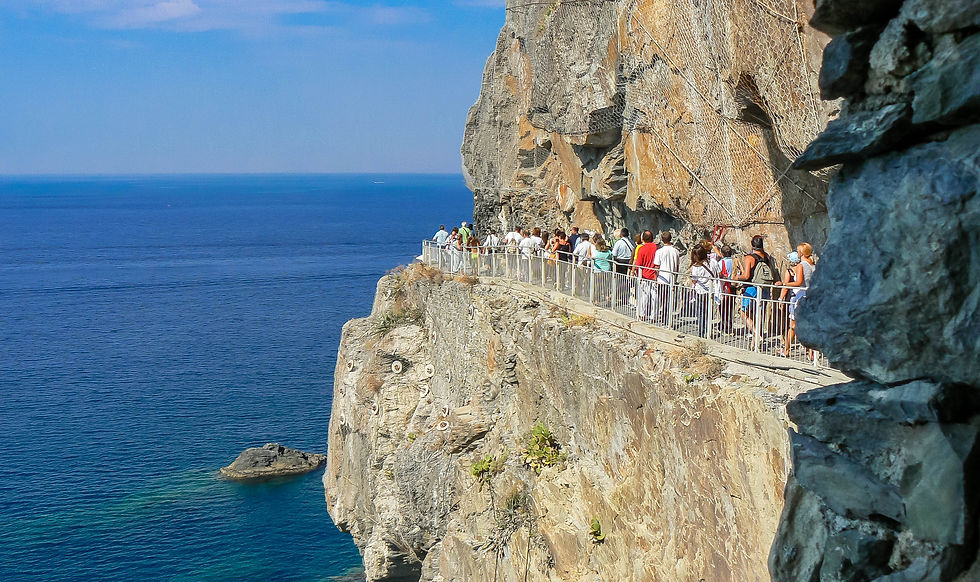By C. J. De Mel, Jadetimes News

Cinque Terre’s renowned hiking trail, the Via dell'Amore (Path of Love), is set to reopen in Italy on July 27th, twelve years after a catastrophic landslide in September 2012 highlighted the need for significant renovations and safety improvements. This 800 meter footpath, known for its breathtaking views of the Ligurian Sea, has been an iconic part of Italy's coastal landscape for over a century.
Before its closure, the Path of Love was one of the most frequented segments of the 130 kilometer network of trails that weave through the five villages—Riomaggiore, Manarola, Corniglia, Vernazza, and Monterosso al Mare, collectively known as Cinque Terre. These villages, perched on dramatic cliffs and boasting colorful, medieval architecture, draw millions of international visitors each year. Interestingly, the Path of Love was not originally planned but emerged during the construction of the railway between Genova and La Spezia in the late 19th century. Portions of the stone path were carved into the cliffs to transport materials for the railway.

The Cinque Terre, now a UNESCO World Heritage site, offers 48 trails of varying difficulties. Visitors can explore the area using the Cinque Terre Express trains, which connect all five villages, or by hiking with a Cinque Terre Card that grants access to the park and its services. The trails also include four paths accessible to people with disabilities.
The idea to connect Riomaggiore and Manarola through the Via dell'Amore came in the 1920s when locals saw potential in linking existing paths created during railway construction. By 1931, the path was completed, and its scenic views made it a popular spot for romantic outings. It was christened the Via dell'Amore by an anonymous scribbler and later enhanced with benches dedicated to mythological figures of love.

However, the path’s location on a steep, fragile mountainside made it prone to landslides. Geologists explain that the original ancient path was built over the mountain to avoid such risks. Over centuries, locals created terraces supported by dry stone walls to cultivate olive trees and vineyards, transforming the rugged terrain into a unique agricultural landscape.
Tourism boomed in the 1950s, leading to the abandonment of agriculture and neglect of the terraces. Combined with the impacts of climate change, this neglect exacerbated the risk of landslides. After severe weather events in 2011 and 2012, new environmental awareness prompted the creation of the Centre for the Study of Geological Risks and support for local agriculture.
The reopening of the Via dell'Amore, which cost €22 million, involved extensive safety measures, including harnesses, nets, and anchors to stabilize the mountain and protect the path. The trail will now accommodate up to 400 visitors per hour, with tickets available online or at park ticket booths to prevent overcrowding. Though full wedding ceremonies on the path will have to wait until next year, intimate weddings with a few guests are allowed starting this summer.

Tourism Minister Daniela Santanchè, who will inaugurate the trail, reflects on the extensive efforts to ensure safety while preserving the path's natural beauty, making it a fitting tribute to its name, the Path of Love.





























Comentarios